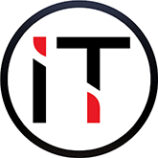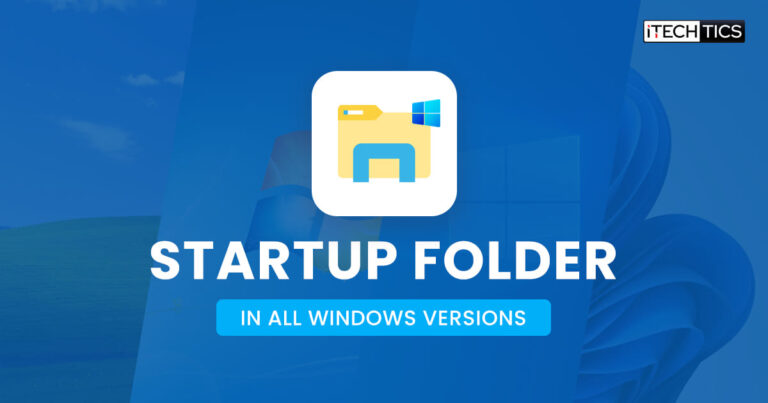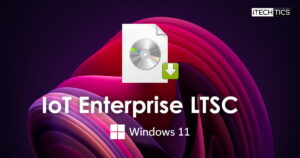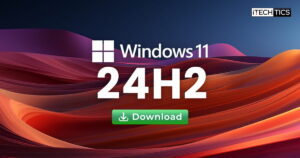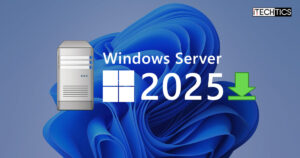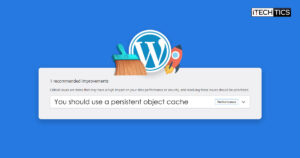One of the most useful, and usually neglected, folders in Windows is the startup folder. The startup folder contains shortcuts to programs that need to be started when the computer starts. Making use of this folder can make your computer usage efficient right from the very beginning.
If not used correctly, the startup folder can hinder the computer’s performance, making the startup slow and annoying. In this article, we will discuss different startup folder locations in all versions of Windows from Windows XP to Windows 11, different ways to manage the startup folder and some security considerations for the Windows startup items.
Table of Contents
When does the startup folder load in Windows?
The startup folder does not launch right from the Windows startup but it is one of the last processes to launch during Windows startup. Here is a diagram of how the Windows operating system loads itself:
Computer starts -> BIOS/UEFI initialization -> Boot Loader Process -> Windows Kernel loading -> User logon screen -> Run Registry keys and startup scripts -> Launch startup folder programs -> Windows is ready to use.

Now that we have a good idea of when the startup folder starts loading during Windows startup, let’s move on to the next step, the types of startup folders.
Types of Startup folders
There are two types of Startup folders in Windows:
- User-specific Startup Folder :
- Programs in this folder launch only for the logged-in user.
- Ideal for personal apps like email clients, chat tools, or custom scripts.
- System-wide Startup Folder :
- Programs in this folder launch for all users on the system.
- Suitable for system utilities and shared applications.
Understanding these distinctions ensures that you place items in the appropriate folder based on your needs.
Location of Startup Folders
The location of the Startup folder varies depending on the Windows version. I am listing down the startup folder locations for all the Windows versions:
Windows 11
User specific:
C:\Users\[Username]\AppData\Roaming\Microsoft\Windows\Start Menu\Programs\StartupSystem-wide:
C:\ProgramData\Microsoft\Windows\Start Menu\Programs\StartupWindows 10
User specific:
C:\Users\[Username]\AppData\Roaming\Microsoft\Windows\Start Menu\Programs\StartupSystem-wide:
C:\ProgramData\Microsoft\Windows\Start Menu\Programs\StartupWindows 7
User specific:
C:\Users\[Username]\AppData\Roaming\Microsoft\Windows\Start Menu\Programs\StartupSystem-wide:
C:\ProgramData\Microsoft\Windows\Start Menu\Programs\StartupWindows XP
User specific:
C:\Documents and Settings\[Username]\Start Menu\Programs\StartupSystem-wide:
C:\Documents and Settings\All Users\Start Menu\Programs\StartupWindows Server
The locations are similar to the client versions of Windows, depending on the server edition. For example, the Windows Server 2025 startup folder location will be similar to Windows 11, Windows Server 2012 and Windows Server 2016 will be the same as Windows 7.
Quickly access startup folder on any version of Windows
Although good to remember, it’s not necessary to remember all the startup folder locations in Windows. Microsoft provides shortcuts to easily open the startup folder.
To access these folders quickly, press Win + R, type <strong>shell:startup</strong> (for user-specific) or <strong>shell:common startup</strong> (for system-wide), and hit Enter. This works on all versions of Windows, including Windows Server.
Supported filetypes
The Startup folder supports the following file types:
- Executable Files (
.exe) : Launch applications directly. - Batch Files (
.bat) : Run scripts or commands. - Shortcut Files (
.lnk) : Point to programs, files, or folders.
Ensure that the files you add are safe and necessary for your workflow.
Managing startup items
Managing the startup folder is as easy as using any other folder.
Adding Items
- Navigate to the desired Startup folder.
- Drag and drop the program’s shortcut or executable file into the folder.
Removing Items
- Open the Startup folder.
- Delete the unwanted shortcut or file.
Important Note : Removing an item from the Startup folder does not uninstall the program. It only prevents the program from launching at startup.
Performance impact
Having too many items in the Startup folder can significantly slow down your boot time. To optimize performance:
- Regularly review and clean up unnecessary items.
- Use Task Manager (
Ctrl + Shift + Esc > Startup Tab) to disable non-essential programs.
If you check out the Task Manager, it will also give you the startup impact of each startup program. If the startup impact is high, it’s better not to load the program on startup to keep the startup process optimum.
Limitations of the Startup Folder
Since the startup folder is just a folder, it has limitations as we can’t configure anything specific for this folder.
- No Delay Option : You cannot set a delay for launching applications.
- Does Not Uninstall Programs : Removing an item from the Startup folder does not uninstall the associated program.
To overcome these restrictions, we can look for alternatives which are discussed below.
Security considerations
Malicious programs can exploit the Startup folder to run automatically. To stay safe:
- Regularly check the Startup folder for suspicious entries.
- Use antivirus software to scan for threats.
- Avoid downloading unknown programs or scripts.
Alternatives to the startup folder in Windows
If the Startup folder doesn’t meet your needs, consider these alternatives:
Scheduled Tasks
Scheduled tasks allow you to automate the execution of programs and scripts at specific time intervals or events. One of the events is the Windows startup. The advantage of using scheduled tasks is that they offer flexibility for maintenance, updates, or repetitive tasks without manual intervention.
To add a program to the startup using scheduled tasks, follow the steps below:
- Open Task Scheduler: Press
Win + R, typetaskschd.msc. - Create a new task:
- Trigger: Select “When I log on.”
- Action: Choose “Start a program.”
- Delay: Use “Delay task for” under “Advanced settings.”
Registry startup entries
You can also add programs to the Startup using the Windows Registry. This method can be useful for automating the import of startup items across multiple computers.
Another benefit of using the Registry startup is that it loads before all other startup items.
For user specific startup, open and add the items here:
HKEY_CURRENT_USER\Software\Microsoft\Windows\CurrentVersion\RunFor system-wide startup items, add items to this registry:
HKEY_LOCAL_MACHINE\Software\Microsoft\Windows\CurrentVersion\RunHere’s the process for adding your program to the Startup Registry:
- Press
Win + R, typeregedit, and pressEnterto open the Registry Editor. - Navigate to
HKEY_CURRENT_USER\Software\Microsoft\Windows\CurrentVersion\Run. - Right-click on the
Runkey, selectNew, and then selectString Value. - Name the new string value
MyApp. - Double-click on the itechticsApp entry and set the value data to the path of the executable file, for example:
C:\Program Files\itechtics\MyApp.exe.
The Registry should look like this:
[HKEY_CURRENT_USER\Software\Microsoft\Windows\CurrentVersion\Run]
“itechticsApp”=”C:\Program Files\itechtics\MyApp.exe”
Group Policy
Using Group Policy is a very powerful way to control startup programs of any user. The biggest advantage of using Group Policy is that it comes into effect for all the relevant users and the users cannot change the settings themselves.
To add startup programs using Group Policy, follow the steps below:
- Open Group Policy Editor: Press Win + R, type
gpedit.msc. - Navigate: Go to User Configuration > Administrative Templates > System > Logon.
- Configure: Double-click “Run these programs at user logon.”
PowerShell
PowerShell offers a wonderful command-line way to manage startup items. You can also add items to Windows startup using PowerShell.
To view startup items, run the following command in PowerShell:
Get-ChildItem -Path "$env:APPDATA\Microsoft\Windows\Start Menu\Programs\Startup"To add a new item to the startup folder, run the following command in PowerShell:
New-Item -Path "$env:APPDATA\Microsoft\Windows\Start Menu\Programs\Startup" -Name "MyApp.lnk" -ItemType SymbolicLink -Value "C:\Path\To\App.exe"To view and edit startup items using PowerShell in Windows 11, use the Get-Item and New-Item cmdlets.
Troubleshooting
Although the startup folder in Windows is very easy to use, there are times when you will need to troubleshoot the startup items.
- Hidden Entries: Some entries may not appear in Task Manager but are visible in System Configuration.
- Selective Startup: Use “Selective Startup” or “Diagnostic Startup” to troubleshoot by disabling specific items.
To check the hidden entries, I use HijackThis tool which displays all types of visible and hidden entries of Windows Startup. This tool is a life saver for removing malware from the system startup.
Windows also provides an option to troubleshoot the startup items. To troubleshoot startup items using the Windows configuration utility, go to Run -> msconfig. Select ‘Diagnostic Startup’ from the General tab. This will disable all startup items and will only load Windows drivers and essential services only.
I hope this guide will serve as a comprehensive guide for managing and troubleshooting startup programs in Windows. If I have missed anything or for any kind of help, please feel free to leave a comment below.

